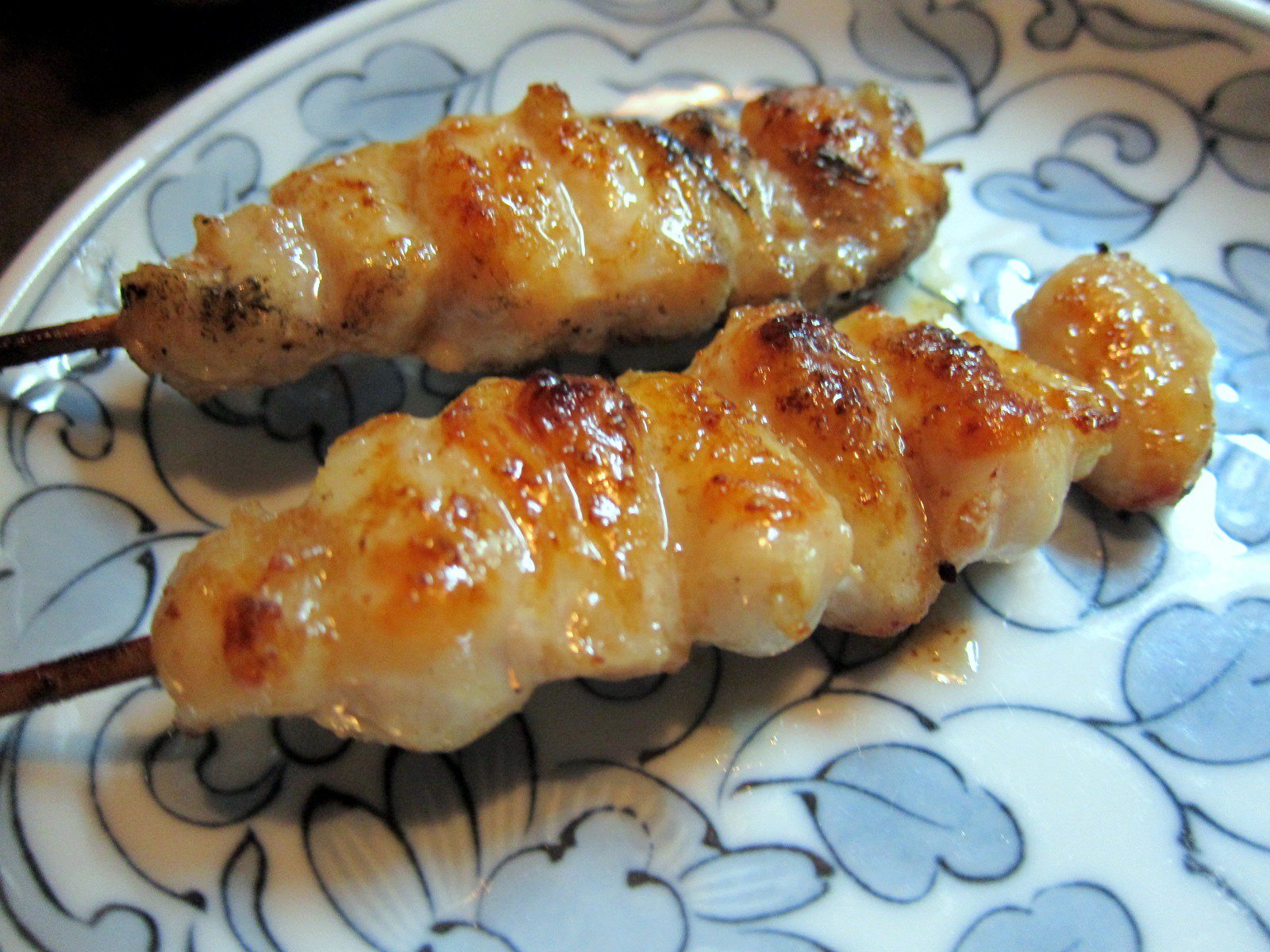
Chicken is the world’s most consumed meat – this versatile bird can be found in cuisines all around the world. However, most recipes often call for the more “edible” parts of the chicken, and most people would usually chuck unwanted bits like the beak and bones. Some people love to nibble on the wingtips and feet, but not many people would actually think about favouring chicken butt.
Which brings us to this point: if something doesn’t sound appetising, give it a fancy name. Its actual name is the pygostyle – the heart-shaped flap covering the posterior, where the tail feathers gather – of chicken or turkey. It’s basically the butt of the bird, but here are its other names:
Japanese: 三角 (Sankaku) or ぼんじり (Bonjiri)
The Japanese have made pygostyle a delicacy – it’s a popular part of the chicken at yakitori restaurants. It’s called bonjiri or sankaku (meaning ‘triangle’) which is seasoned with either salt or tare sauce and then grilled over charcoal fire.
Because the tail meat is the fattiest cut of meat from a chicken (because it contains the oil glands for preening feathers) and contains a lot of collagen, it’s extremely juicy and has a melt-in-your-mouth texture when cooked properly – low and slow – with a crispy crunch on the outside. There’s also a bit of cartilage-like texture to it as well.
Japanese restaurants use specific breeds of chicken for bonjiri in order to achieve the desired texture.

English: Pope’s Nose, Bishop’s Nose, or Parson’s Nose
Its nickname basically compares it to noses of dignitaries – the term Parson’s Nose came about in the 15th century from the notion that an English parson has “his nose in the air” like a chicken’s rear end. The similarly derogatory term Pope’s Nose may have originated to demean Catholics in the 17th century. It’s also called Sultan’s Nose during the war against the Ottoman Empire.
The Pope’s Nose is not really a sought after part of the bird. Usually, the traditional way to eat them in the west is straight off the whole roasted turkey, chicken, or other bird.
However, turkey pygostyle is a delicacy in some South Pacific Islands like Micronesia and Samoa, as well as Ghana. For Samoans, it was a cheap cut of chicken that became popular, and because of its high fat content, it was banned from 2007 to 2013 to combat obesity.
However, a study from Nutrition And Dietary Studies Of America that found chicken tailbones are higher in both iron and calcium than chicken breast, and a serving of turkey tail provides 13g of protein and 40mg of calcium.

Chinese: 七里香 (7 Mile Fragrance)
Before there’s any confusion, it should be clarified that 七里香 (Qi Li Xiang or ‘7 Mile Fragrance’) is the Chinese name for the fragrant Orange Jasmine (or Orange Jessamine) flower. And it’s also the name given to chicken butt.
There are recipes that use chicken pygostyle (七里香) across Asia, which is usually used to make soups and soup stock. In Taiwan, it’s available as a barbecued skewer much like a satay, and it’s often sold at night markets.

It’s fair to say that while chicken butt is shunned in many parts of the world, it’s considered a delicacy in many parts of Asia. You can also find them as street food in countries like the Philippines (Puwet ng manok) and Thailand (ตูดไก่ย่าง; dtòot gài yâang), where they’re barbecued on a stick over a charcoal fire (it’s definitely tastier than being canned). In parts of Asia, it’s said that tailbones are a traditional folk remedy for bad skin (it does have a lot of collagen).










